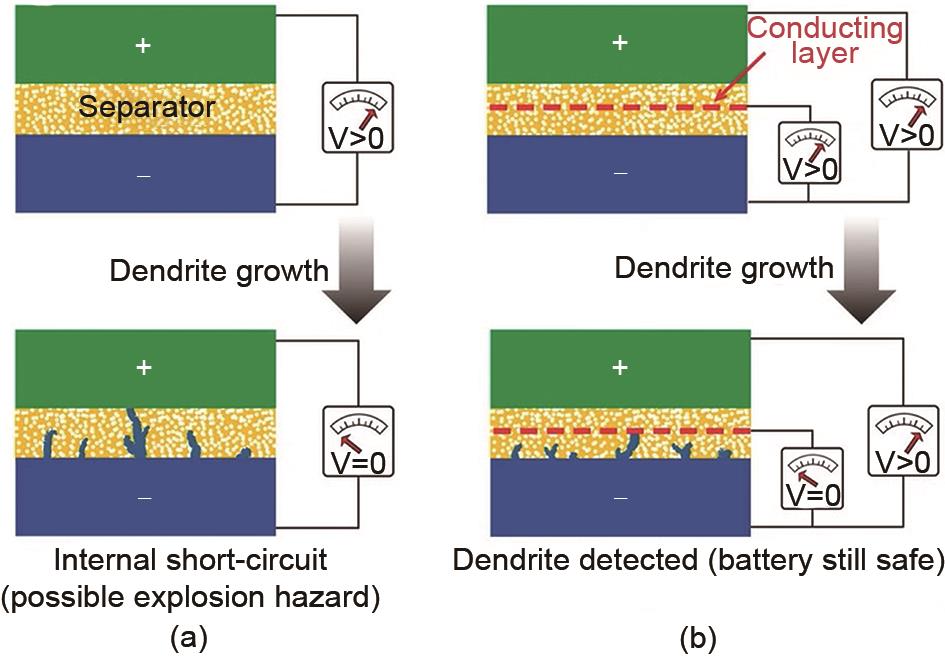电池无损检测监测方法分析
Analysis of battery nondestructive testing and monitoring methods

电池无损检测监测方法分析 |
| 郝奕帆, 祝夏雨, 王静, 邱景义, 明海, 方振华 |
|
Analysis of battery nondestructive testing and monitoring methods |
| Yifan HAO, Xiayu ZHU, Jing WANG, Jingyi QIU, Hai MING, Zhenhua FANG |
| 图3 智能电池设计和制造示意图。(a) 在传统锂电池中,只有当电池由于内部短路而失效并且 VLi-Li 降至零时,才能检测到锂枝晶完全穿透隔膜;(b) 在具有双功能隔板的锂电池,过度生长的锂枝晶渗入隔板并与导电铜层接触,由于内部短路引起 VCu-Li 下降,即将发生故障警告。同时充满电的电池在非零电位下仍可安全运行[ |
| Fig. 3 Schematic of the smart battery design and fabrication. (a) Dendrite formation in a traditional lithium battery where complete penetration of the separator by a lithium dendrite is only detected when the battery fails due to an internal short circuit and VLi-Li drops to zero; (b) In comparison, a lithium battery with a bifunctional separator where the overgrown lithium dendrite penetrates into the separator and makes contact with the conducting copper layer, giving rise to a drop in VCu-Li as warning of impending failure due to an internal short circuit. As well as, the full battery remains safely operational with non-zero potential[ |

|